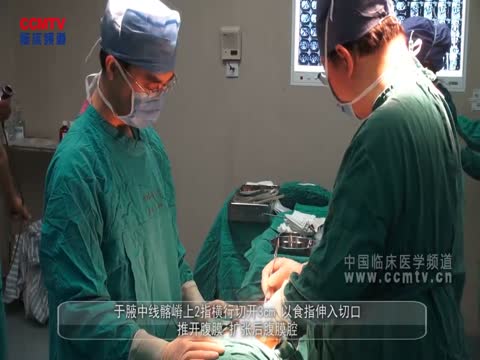角膜神经纤维缺失或可预测糖尿病性视网膜病变
墨尔本——据世界糖尿病大会(WDC)上报告的纵向LANDMark研究,3年后将发展到糖尿病性视网膜病变的1型糖尿病患者的角膜神经纤维长度(采用角膜共焦显微镜测量)显著缩短。
布里斯班昆士兰科技大学健康与生物医学创新学院的一位研究者Nicola Pritchard发言称,在3年随访过程中发生神经病变的患者与未发生神经病变者相比,其基线时的角膜神经纤维长度显著缩短(13.3 vs. 17.4 mm/mm2;P=0.036)。角膜神经纤维长度是衡量角膜单位面积内的神经组织量的一项指标,可能是筛查糖尿病性视网膜病变的一项有用的无创辅助手段。对动物模型进行研究发现,角膜神经缺失确实先于足部的神经缺失。希望这项技术可用于在患者出现症状前以及出现损害前筛查极早期神经病变征象。
LANDMark(运用新的眼标志物纵向评估糖尿病患者的视网膜病变)是一项历时5年的观察研究,共涉及242例1型糖尿病患者。3年的分析中包括了来自64名基线时无神经病变的受试者的数据,其中7名(11%)到第3年时按照多伦多标准判断发生了神经病变。研究受试者每年进行神经病变评估,其中包括采用角膜共焦显微镜测量角膜神经参数以及采用非接触式角膜触觉测量法测量角膜灵敏性。该研究表明,腓骨传导速度和冷觉降低以及振动阈增加与发生糖尿病性视网膜病变有关。不过,尽管在3年中发生神经病变的患者基线时角膜神经纤维长度与未发生者相比显著缩短,但角膜神经纤维长度仍没有显著的组间差异。Pritchard女士对此表示,神经纤维参数随时间而改善的原因尚不清楚,或许是神经纤维的生长弥补了缺失。
LANDMark研究的负责人Nathan Efron表示,角膜共焦显微镜有望成为一项非常简易的糖尿病性视网膜病变筛查技术,可以在进行每年的眼底摄影检查的同时实施。该技术起码是神经病学家及糖尿病专家有权选用的技术范畴中的一项可行技术,并有可能筛查出极早期的糖尿病性视网膜病变。目前我们尚未对其完全明了,但只要能够获得更多确凿的数据并且能够进行更好的确证,就有可能使之变为现实。
本研究无相关的利益冲突披露。
爱思唯尔版权所有 未经授权请勿转载
By: BIANCA NOGRADY, Clinical Endocrinology News Digital Network
MELBOURNE – Corneal nerve fiber length, measured using corneal confocal microscopy, is significantly reduced in individuals with type 1 diabetes who go on to develop diabetic neuropathy at 3 years, according to data from the longitudinal LANDMark study.
Researchers found that corneal nerve fibre length was significantly lower at baseline in individuals who developed neuropathy than in those who did not over the 3-year follow up (13.3 vs. 17.4 mm/mm2, respectively; P = 0.036).
Corneal nerve fiber length, which is a measure of amount of nerve tissue per unit area in the cornea, may be an useful, noninvasive adjunct to diabetic neuropathy screening, Nicola Pritchard, a researcher for the Institute of Health and Biomedical Innovation at Queensland University of Technology, Brisbane, suggested in her presentation of the results at the World Diabetes Congress.
"In animal models, we know that the dropout of nerves in the cornea actually does precede the dropout of nerves in the foot," Ms. Pritchard said in an interview.
"Our hope is that this technique will be useful to pick up very, very early signs of neuropathy, way before people are getting symptoms and before things develop to a stage where there’s damage," she said.
LANDMark (Longitudinal Assessment of Neuropathy in Diabetes Using Novel Ophthalmic Markers) is a 5-year observational study of 242 individuals with type 1 diabetes.
The 3-year analysis included data from 64 participants without baseline neuropathy, seven (11%) of whom had developed neuropathy by 3 years, as defined by the Toronto criteria.
Study participants undergo annual neuropathy assessments, including measurement of corneal nerve parameters using corneal confocal microscopy and measurements of corneal sensitivity using noncontact corneal esthesiometry.
The study showed that reduced peroneal conduction velocity and cold sensation and increased vibration threshold also were associated with development of diabetic neuropathy.
However, although corneal nerve fiber length was significantly reduced at baseline in individuals who developed neuropathy, compared with those who did not, at the 3-year mark there was no significant difference in corneal nerve fiber length between the two groups.
Ms. Pritchard said that it was unclear why the nerve fibre parameters improved over time, suggesting that perhaps the nerves were growing to fill in the gaps.
Nathan Efron, D.Sc., research leader of the LANDMark study, said corneal confocal microscopy had the potential to be a very simple screening technique for diabetic neuropathy that could be applied at the same time as patients come in for their annual fundus photographs.
"At the very least, it’s a viable alternative technique to the range of techniques neurologists and diabetic specialists already have at their disposal, but the potential advantage of this technique is that it might be a very early marker of diabetic neuropathy," said Dr. Efron, professor in the School of Optometry and Vision Science at Queensland University of Technology.
"We’re not there yet, but down the line, that’s where this all could come to, as long as we can get more firm data and validate it a bit better," he said.
There were no relevant conflicts of interest declared.
欢迎关注爱唯医学网糖尿病及内分泌官方微信

下一篇: 基层筛查有助于选择BRCA突变检测对象
- 您可能感兴趣的文章
-
- 他们推荐了的文章
-
- •刘晓蓓 顶文章 子宫内膜异位症生育指数:新确证的子宫内膜异位症分期体系 5小时前
- •姚和 顶文章 【病例挑战】不寻常的腹壁包块 17小时前
- •龙云铸 顶文章 Sofosbuvir成本效益:治疗HCV复治以及HCV伴肝硬化患者更划算! 2天前
- •陈荣彪 顶文章 非ST段抬高型ACS患者行常规介入治疗:10年生存率无改善 2015-09-12 13:29:38
- •伍红 顶文章 《高血压合理用药指南》在京发布 2015-09-09 19:43:25



